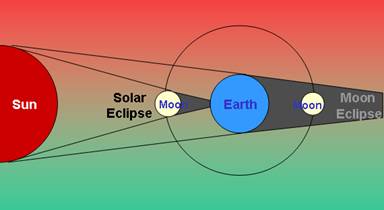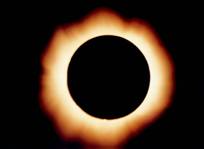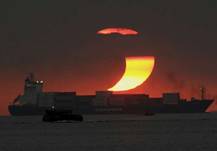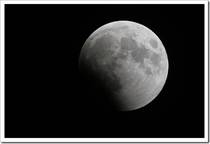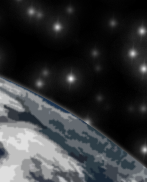 |
||
HomeSolar system UniverseAstronomy historyAstronomical distances and sizes |
||
Solar system |
||
|
Our solar system is formed by the Sun and another eight planets: Mercury, Venus, Earth, Mars, Jupiter, Saturn, Uranus and Neptune. Each planet can have moons or rings. Beside the planets, the system also contains asteroids, located mainly in two regions, the Asteroid Belt, between Mars and Jupiter and the Kuiper Belt, near the orbit of Pluto and comets, which are concentrated in the Oort Cloud, region surrounding our solar system at a distance of 30 to 100 AU from the Sun, composed of dust and 1 trillion (estimate) nuclei of comets that occasionally are launched toward the sun due to some disturbance in its orbit. When an asteroid moves into a collision course to Earth, it is called meteoroids.
http://www.planetario.ufrgs.br/sistemasolar.GIF
Currently, we know 13 moons of Neptune; the largest of them is called Triton and measure 2700 km of diameter. Triton and other 3 moons orbit the planet in the opposite direction of the other 9 moons.
The temperature of the Earth would be about -270 °C, and life, color, wind and others (because every form of life requires energy) would not exist.
The total eclipse occurs when the Sun is completely obscured by the Moon, this occurs when the Sun, the New Moon and Earth are perfectly aligned.
Some scientists believe that 65 million years ago, a comet crashed on the Caribbean Sea. At that time our ancestors (mammals) were fortunate to be small enough to resist the days of darkness, cold and little food that followed. All other living beings with more than 15 kg failed to survive, including the dinosaurs.
Seen from Earth, the satellite shows stages, but shows the same face, which generated many speculations about the dark side of the Moon that in fact is illuminated when in the period of New Moon. That happens because their period of rotation is equal to the period of translation.
The astronomer John Flamsteed discovered Uranus in 1690, but he catalogued it as a star called Tauri. In 1781 William Herschel discovered it as a planet, and gave the name of "the Georgium Sidus" (the Georgian Planet) as a gift to the English King George III, but after your name is changed to Uranus, that was the father of Saturn in Greco-Roman mythology. This name was proposed by the German astronomer Johann Elert Bode around 1850.
We can see that instead of rotating around the Sun, it seems that Uranus is rolling. It also has the retrograde motion (movement that goes back). Thanks to the tilting of Uranus, the poles receive more light that the central areas.
Neptune was the first planet discovered by calculations and in 1846 was found by powerful telescopes. After the discovery of Uranus, the astronomer Alexis Bouvard in 1820 noted that its orbit not followed the path established by the laws of celestial mechanics and therefore realized that after there was a new planet Uranus. This led the English astronomer John C. Adams mathematically determine the location of Neptune, and some months after the French astronomer Urbain Le Verrier got the same results. Today, we know that the two astronomers find the wrong location for a short, but even with those calculations can be found the eighth planet.
|
||
The Wonderful World of Astronomy - ThinkQuest |
||
|
|
|
|

